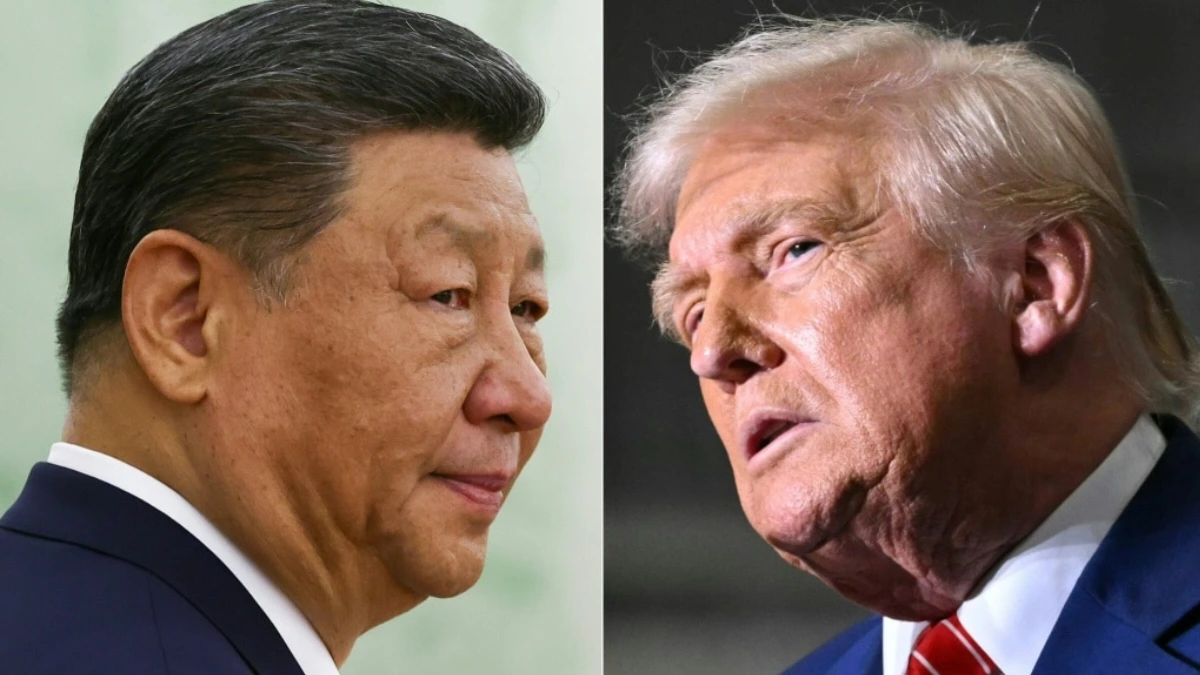KUALA LUMPUR — US President Donald Trump expressed optimism Sunday about reaching a trade agreement with Chinese President Xi Jinping after what he described as successful discussions between senior American and Chinese officials in Malaysia.
The two day negotiations, held on the sidelines of the Association of Southeast Asian Nations (ASEAN) summit, aimed to ease months of rising tension in the world’s largest trade relationship.
The American delegation, led by Treasury Secretary Scott Bessent and US Trade Representative Jamieson Greer, met with Chinese Vice Premier He Lifeng and chief trade negotiator Li Chenggang in Kuala Lumpur.
It was the fifth round of face to face talks since May and came at a crucial moment, with a fragile truce between Washington and Beijing set to expire on November 10. The discussions focused on extending the trade ceasefire that has prevented a fresh round of tariffs since summer.
The United States has threatened to impose 100 percent tariffs on Chinese imports starting November 1 in retaliation for Beijing’s expanded export restrictions on rare earth magnets and minerals critical components in electric vehicles, smartphones, and defense systems.
After the meetings, Bessent described the talks as “substantial and productive,” adding that both sides had built “a strong framework” for their leaders to finalize later this week. Trump, who arrived in Malaysia on Sunday as part of a five day Asia tour, said he believes a deal is within reach.
I think we’re going to have a deal with China, Trump told reporters. “We’ve agreed to meet again both in China and in the United States soon after our discussions in South Korea.”
The US president and Xi are expected to hold direct talks on October 30 in Seoul, marking their first in person meeting in nearly a year.
Analysts view the renewed dialogue as a step toward stabilizing relations but caution that deep divisions remain. “The fact that both sides are still talking, and talking in person, is a positive sign,” said Mei Lin Chen, a trade policy expert at Singapore’s Institute of International Affairs.
“But these discussions are more about damage control than a breakthrough. The structural issues technology access, export restrictions, and industrial policy remain unresolved.” Economists also noted that extending the current trade truce could calm global markets rattled by uncertainty.
“An extension would give investors breathing room and prevent new supply chain disruptions,” said Jacob Miller, an economist at the London based firm GlobalTrade Watch. “However, a long term solution will require political will on both sides, not just temporary pauses.”
The United States and China conduct roughly $660 billion in annual trade. While both countries rolled back most of their triple-digit tariffs earlier this year, remaining duties still affect sectors ranging from agriculture to technology.
Under the current agreement, Chinese exports to the US face average tariffs of about 30 percent, while American goods exported to China face roughly 25 percent duties.
Analysts warn that failure to extend the truce could push tariffs back to 100 percent levels triggering new inflationary pressures globally.
Trade between the two powers has already slowed. US soybean exports to China, once a cornerstone of the bilateral relationship, fell nearly 40 percent year over year, according to data from the US Department of Agriculture.
For business owners and industry representatives, the uncertainty remains unsettling. “We’ve had to halt two major shipments to China this quarter because of changing customs rules,” said Michael Ross, a soybean exporter from Iowa.
“A stable deal could help restore some predictability.” In Beijing, Chinese industry groups have urged flexibility but remain wary of American restrictions on high tech exports.
“China wants cooperation but cannot compromise its strategic resources,” said an official at the China Chamber of Commerce for Metals, speaking on condition of anonymity.
“Rare earths are a matter of national security.” Meanwhile, Southeast Asian nations hosting the talks have welcomed the renewed dialogue.
“The region benefits when US & China tensions cool,” said Malaysian economist Nur Aina Rahman. “Stability in trade means stability in regional manufacturing.”
Attention now shifts to the upcoming Trump Xi meeting in Seoul, where the two leaders are expected to discuss the framework established in Malaysia.
The agenda will likely cover trade, rare earth exports, and wider geopolitical issues including Taiwan and the detention of Hong Kong media tycoon Jimmy Lai.
Officials said both governments are exploring possible follow up meetings in Washington and Beijing later this year. Extending the current trade truce beyond November 10 remains under consideration.
Despite the progress, experts warn that the relationship remains fragile. “The trust deficit is still huge,” said Chen. “Both sides want stability, but neither wants to appear weak.”
The Malaysia meetings signal a cautious step toward de-escalation after years of economic rivalry. With both economies facing domestic pressures and global investors watching closely, the US China trade talks have taken on renewed urgency.
Whether the progress made in Kuala Lumpur leads to a durable agreement or merely another temporary pause will depend on the tone and outcome of the Trump-Xi summit in South Korea.

